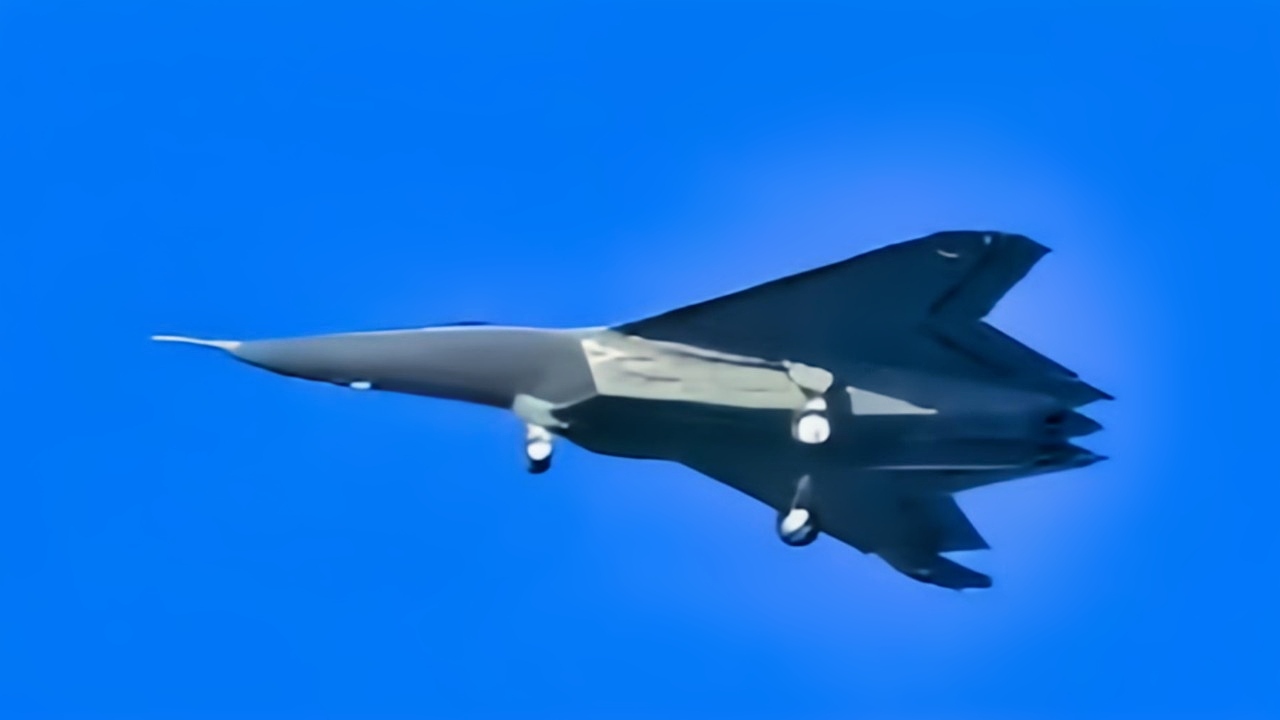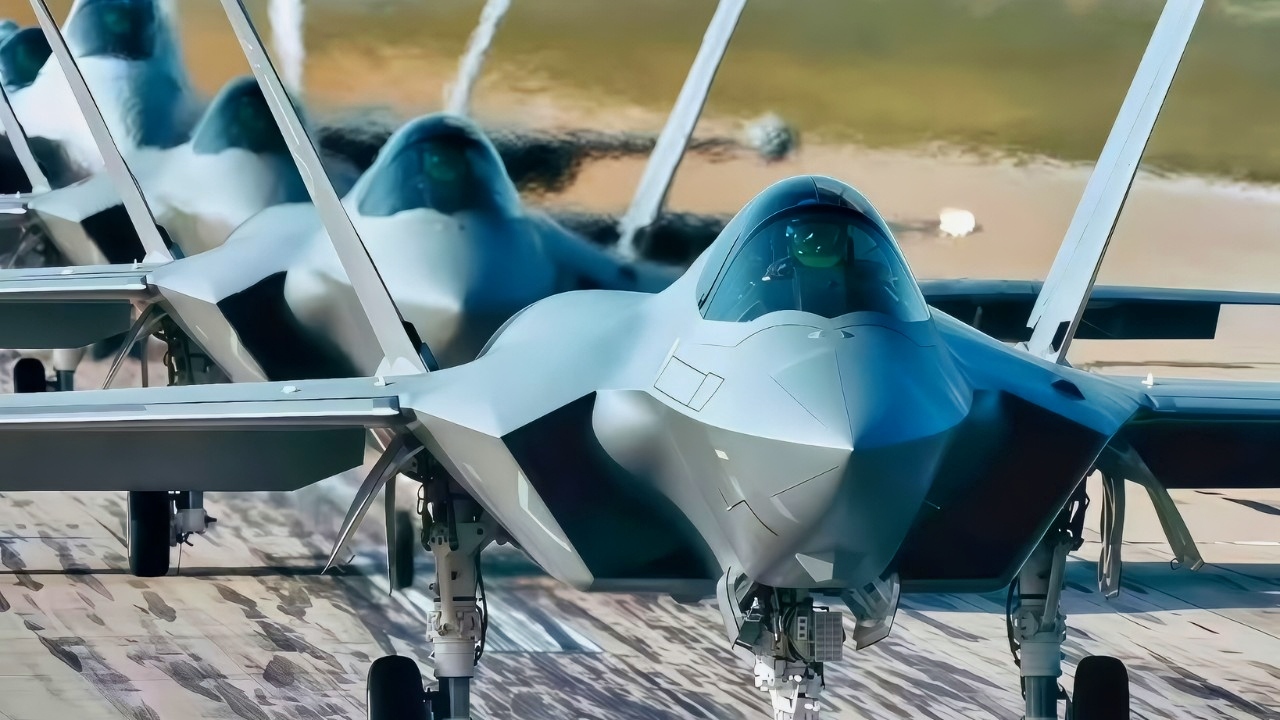Key Points and Summary – China’s Air Force (PLAAF) is rapidly modernizing, transforming from a regional force into a peer challenger to the U.S.
-This shift is driven by the volume production of its J-20 “Mighty Dragon” stealth fighter (now estimated at 200+ units) and large fleets of modern 4.5-gen J-16 and J-10C jets.

J-20 Stealth Fighter in 2024. Image Credit: Creative Commons.
-With new platforms like the J-35 emerging, China’s production pace and sheer quantity are “nipping at the USAF’s heels.”
-However, the U.S. retains a critical qualitative advantage in pilot training, sensor fusion, sustainment, and, most importantly, real-world combat experience, which the PLAAF lacks entirely.
China’s Air Force Is Modernizing Fast
The People’s Liberation Army Air Force (PLAAF) is entering a phase of rapid modernization, and the world is noticing. It is transforming from a regional air defender into a potential peer challenger to the United States Air Force, particularly in the Asia-Pacific.
For example, between 2015 and 2025, Beijing has dramatically accelerated spending, production, and deployment of advanced fighters. At the same time, the PLAAF has been building its presence around Taiwan, the South China Sea, and the first island chain. According to a Pentagon assessment, China is rapidly building up and improving its fleet of fifth-generation fighters while expanding its production capacity.

J-50 Fighter from China. Image Credit: Creative Commons.
At the same time, open-source data places the PLAAF’s total aircraft inventory in the thousands, with one source listing some 3,733 active units.
Taken together, it’s clear that China is focusing on both the quantity of aircraft it is producing and modernization, raising the question of whether U.S. air dominance, which has long been taken for granted, could now face a serious challenge.
China’s Key Fighters and Prototypes
China has developed a number of impressive platforms in recent years, between fifth-generation aircraft currently in service and several next-generation platforms expected to arrive in the future. Among them is the Chengdu J-20 “Mighty Dragon,” a twin-engine, fifth-generation stealth fighter that first entered service in 2017.
It made China the second country, after the United States, to field an operational stealth fighter. As of mid-2024, analysts estimate production at approximately 200 airframes, placing the J-20 fleet in triple digits and closing in on U.S. comparable numbers.
It led analysts to claim that China is “nipping at USAF’s heels.”
And it is.
Not only that, but the aircraft is increasingly appearing on the front line.
A June 2024 report revealed how a Su-30/J-11 brigade was converted in its entirety to a new fleet of J-20s.
The J-20 is designed for air superiority and precision strike, and it is equipped with long-range air-to-air missiles such as the PL-15, enabling it to engage targets at greater ranges.
Its presence means that the PLAAF no longer relies solely on legacy or Russian-derived designs. And that’s a significant step.

J-20 with PL-15 Missile. Image Credit: Creative Commons.
Then there’s the Shenyang J-16 family—a platform derived from the Russian Su-30 lineage but equipped with modern Chinese avionics, AESA radar, and multirole capability.
The J-16D variant in particular was built for electronic warfare/SEAD (Suppression of Enemy Air Defenses), carrying jamming pots and wingtip electronic warfare equipment. Those features make the J-16D an important asset in contested air environments, and give China a high-volume, modern fighter that can be deployed alongside its stealth aircraft.
The Chengdu J-10C is another impressive piece of hardware. While it is technically a fourth-generation aircraft, its upgraded features make it a “4.5 generation” workhorse. The J-10C is a single-engine, multirole fighter that has been produced in substantial numbers and forms part of the PLAAF’s backbone. The latest variant incorporates AESA radar and modern weapons systems. And while it’s not a stealth aircraft, when fielded in large numbers, these aircraft significantly enhance China’s combat potential.
There are near-term prototypes or emerging platforms that are extremely promising for China as well.
The J-35, for example, is a carrier-capable stealth fighter currently under development, designed for both the PLAAF and the People’s Liberation Army Navy Air Force (PLAN AF).
Reports from June 2025 indicate that Pakistan was offered 40 of the jets, suggesting that progress is being made—and that China is competing with Russia’s own efforts to develop an export-friendly stealth fighter.

J-35 Factory in China. Image Credit: CCTV Screenshot.
Is China Nipping at USAF’s Heels?
So, is China a threat? Yes and no.
In terms of numbers and production pace, the answer is a simple yes. Combine quantity and mass production with modernization, and the U.S. edge narrows.
For example, the J-20 production line has entered volume production, reducing the unit gap between China and the U.S.
As with the broader technology sector, where China dominates smartphone and computer production, Chinese aircraft manufacturing is proving to be extraordinarily capable and efficient.
China is also catching up in terms of regional proximity and contested geography, in that it is deploying these aircraft across the first island chain and near Taiwan, meaning the USAF’s basing, logistics and sortie generation will face increasing pressure in the event of a Sino-U.S. clash.
And if the PLAAF continues to improve its support systems alongside its aircraft modernization, the gap with the U.S. will narrow even further.
From tankers and integrated missiles to electronic warfare variants like the J-16D, China is indeed catching up.
But there is reason for the USAF to be hopeful. One significant advantage it has over the PLAAF is the quality of its pilots and their experience. The U.S. fifth-generation force remains qualitatively superior in pilot training. It’s also exceptional in terms of sustainment and sensor fusion.
Additionally, the USAF is supported by allied air forces that are also integrating fifth-gen systems and working on next-generation programs.
And in the end, risk, attrition, and real-world flight all matter—China may have the numbers, but it doesn’t have the experience.
The question now is whether the United States can maintain the technological gap—and avoid a war scenario that would give Chinese pilots the experience they need to reach the next level.
About the Author:
Jack Buckby is a British author, counter-extremism researcher, and journalist based in New York. Reporting on the U.K., Europe, and the U.S., he works to analyze and understand left-wing and right-wing radicalization, and reports on Western governments’ approaches to the pressing issues of today. His books and research papers explore these themes and propose pragmatic solutions to our increasingly polarized society. His latest book is The Truth Teller: RFK Jr. and the Case for a Post-Partisan Presidency.
More Military
China’s New J-35 Navy Stealth Fighter Summed Up in 2 Words
China’s ‘Mighty Dragon’ J-20 Air Force Stealth Fighter Summed Up in 2 Words
China Is Trying to Turn the Indo-Pacific Into a Giant U.S. Navy ‘No-Go Zone’
$13 Billion Mistake? USS Gerald R. Ford Is the Navy’s Aircraft Carrier Agony
China’s ‘Thousands of Missiles’ Have a Message for U.S. Navy Aircraft Carriers











Jeff Boyd
October 28, 2025 at 2:28 pm
What I don’t get either is its NOT the Quantity it’s the Quality of their Pilots mostly. These don’t fly themselves and the pilots must be highly trained to fly these well.
One good pilot can take down a dozen poorly trained ones so I don’t have a clue if they’re using a good quality training school like ours.
Freddy
October 29, 2025 at 1:41 am
How They appear more like US stealth fighters than Rusian once their “guru” of aircraft makers…just wait until the real battle proof ’em…like J10 took-down Rafalle in Pakistan(with help of radar trap…not a dog fighter suposedly)
Jacob Williams
October 29, 2025 at 10:41 pm
That’s fine. They’re still playing catch-up. Do you realize that by the end of 2025 America will have produced over 1200 better F 35s nice try China, but you’re still nowhere close to us